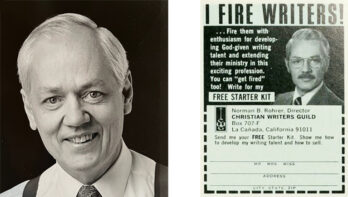
In the composition of any article, it helps to recognize certain crucial points along the way: your starting point, the thesis, the passion point of the piece, and the takeaway.
Starting point
If you’ve spent a half-hour puzzling over how to start your article, skip it. Seriously, skip over your intro and come back to it. Maybe you’ll find your opener somewhere else in the piece.
When I taught public speaking, I used SSQQ as a rubric for openers. My students might start a speech with a story, a startling statement, a question, or a quotation. While there may be additional options for writers, consider these four. From the beginning, you want to draw the reader/listener into the conversation, and any of those four methods can do that. Stories tend to delight readers, but they can also dominate an article. Make sure your story fits your theme. Startling is my favorite strategy—readers sit up and take notice—while I shy away from quotations, unless they’re especially startling. (Haven’t we already heard C.S. Lewis’s thoughts on everything? We want to hear yours.) And a good opening question gets your readers thinking along with you.
But please don’t take a page-and-a-half discussing how you first approached this subject. It may be a warm-up process that you need, but it doesn’t draw your reader in. Save your editor the trouble and delete it yourself. A compelling personal story can work, but don’t ramble on about how you wondered what to say and so you went to the dictionary and Wikipedia and realized that . . . just don’t do that. Find your strongest starting point and start there. Perhaps SSQQ can help.
Thesis
You may have learned back in grade school to construct a thesis statement for an essay. Modern writing styles often skip over such basics, but it’s still a pretty good idea to create such a sentence, even if you never use it verbatim in the article. You need to be clear on what you’re writing about. That seems obvious, but it’s amazing how many articles wander away from that compass point, losing the reader. In some cases, you might be unsure what you’re writing about, so a thesis sentence will help you stay on track.
By the way, if you can’t come up with a snappy SSQQ intro to your article, sometimes a clear thesis statement will suffice. That’s what I’ve done in this piece.
Passion Point
Writers often focus on dispensing information. Especially in magazine work, this is usually the main aim. But readers have emotions, too, which good writers don’t ignore. Your thesis will get a better reception if you find the passion point of your article. It might involve humor or pathos, the fulfillment of a deep longing or the lack of such fulfillment. Writers often stir up fear or anger, and they often employ mockery—though I would strongly discourage any of those passion points (there’s already too much fear, anger, and mockery in our world today).
Stories access emotions most powerfully. Readers identify with people in the stories you tell; they adopt the feelings of those characters, whether real or fictitious. So look for examples and anecdotes, and when necessary make something up. Made-up stories can connect with readers just as strongly as real-life accounts. (Consider the depth of feeling in the parable of the Prodigal Son.) Just be honest when you’re inventing a story. Don’t try to present fiction as fact.
Humor and pathos, longing and joy, stories real and imagined—any of these can reach your reader on an emotional level. This is not a matter of manipulation, but of wholeness. People are not just brains, gathering data; their hearts often propel them into action. So when you find your article’s passion point, you are honoring the emotional side of your readers and possibly igniting change. (And, besides the parables of Jesus, consider that the most powerful theological writing of the New Testament—in, say, Romans or Hebrews—frequently quotes the poetry of the Psalms or prophets, not necessarily to prove points but to tap into crucial emotional content.)
Takeaway
Finally, there’s the takeaway, what I generally call the “So what?”
Here’s a real-life story for you. My church has long emphasized the truth of James 1:22, that we shouldn’t be just hearers of God’s Word, but doers. Years ago, throughout one sermon series on that subject, our pastor trained the congregation to respond to the Scripture reading each week by shouting, “So what?” It was a fun way to underscore the importance of responding to biblical truth.
The week after that series concluded, we had a visit from the bishop of our region. We were honored to have a guest speaker of such status. The bishop began by reverently reading his selected Bible text . . . and then heard a couple hundred people shouting back, “So what?”
Amazingly, our pastor kept his job. The bishop took it in stride. And everyone in the room was vividly reminded of the importance of applying God’s message to our lives.
In your writing, you might not have to spell everything out. You can leave room for the Spirit to nudge individual hearts. But at least lean toward application. You can’t know the details of every reader’s life, and so maybe you can’t prescribe a precise way for everyone to respond to your theme. But you can suggest possibilities. You can stir up creative obedience. What will they do with the message you share? You don’t have to teach them every step, but you can invite them to that dance.
Randy Petersen is the former Director of Scripture Engagement Content for American Bible Society, and he is a writer/editor/consultant with more than sixty books to his credit, including Bible Fun Stuff and The Family Book of Bible Fun (both Tyndale House). For many years, he wrote small-group curriculum for youth and adults published by Right Now Ministries. He first connected with EPA as a member of the staff of the now-defunct Eternity Magazine.
Posted February 20, 2025





